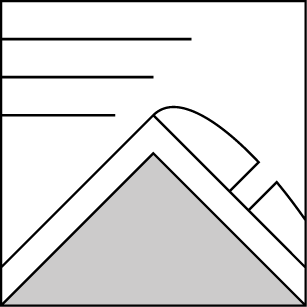Basic Information
Observation Details
Observation Date:
February 27, 2023Submitted:
February 27, 2023Observer:
NWAC Forecaster - Katie WarrenZone or Region:
East CentralLocation:
Upper Teanaway Drainage (2600-6000ft, all aspects)Signs of Unstable Snow
Recent Avalanches?
None ObservedCracking?
IsolatedCollapsing?
None ExperiencedMedia/Attachments







Advanced Information
Weather Summary
Cloud Cover:
ObscuredWind:
Moderate , ENew/Recent Snowfall:
20-30cm HST from overnight and today with 60cm of recent snow (2/21-2/27) from the previous week.
It was a stormy day with cold temperatures, heavy snow (S2), and moderate to strong winds. The fresh snow drifted easily with the wind, and reactive wind slabs formed on west aspects.
Snowpack Observations
It was snowing at the trailhead, and 5-6cm of snow had accumulated by the time I rode away from the truck. Storm snow totals increased as I gained elevation. There was approximately 20-30cm of new snow where I left the snowmobile at around 4300ft.
In sheltered areas, the new snow lacked much slab structure, and while trail-breaking was deep, the low-density snow kept travel reasonable. Test slopes in these sheltered locations produced only dry loose avalanches that lacked energy. On south aspects up to approximately 5500ft, a very thin melt-freeze crust existed below the new storm snow. I could identify this layer in quick hand pits, but it was imperceptible while skinning and skiing.
I found a sheltered location to dig a snow profile on an E aspect at 5700ft. The height of snow in this location was 220cm. The upper snowpack consists of 90cm of right-side-up storm snow that accumulated since 2/14, resting on Valentine's crust. I noted a few storm interfaces, but they were unremarkable in snowpack tests. There is some weaker snow below this crust, but I could not identify these grains as facets, even if they once were. This layer is 1F+ hardness and was unreactive in stability tests.
Winds were drifting snow in most terrain above 5700ft, scouring previously loaded east aspects and transporting snow to west aspects. Steep test slopes along the ridge easily produced cracking in the wind-drifted snow.
Avalanche Problems
| Problem | Location | Distribution | Sensitivity | Size | Comments |
|---|---|---|---|---|---|
 Wind Slab
Wind Slab
|
|
Layer Depth/Date: 30-60cm |
